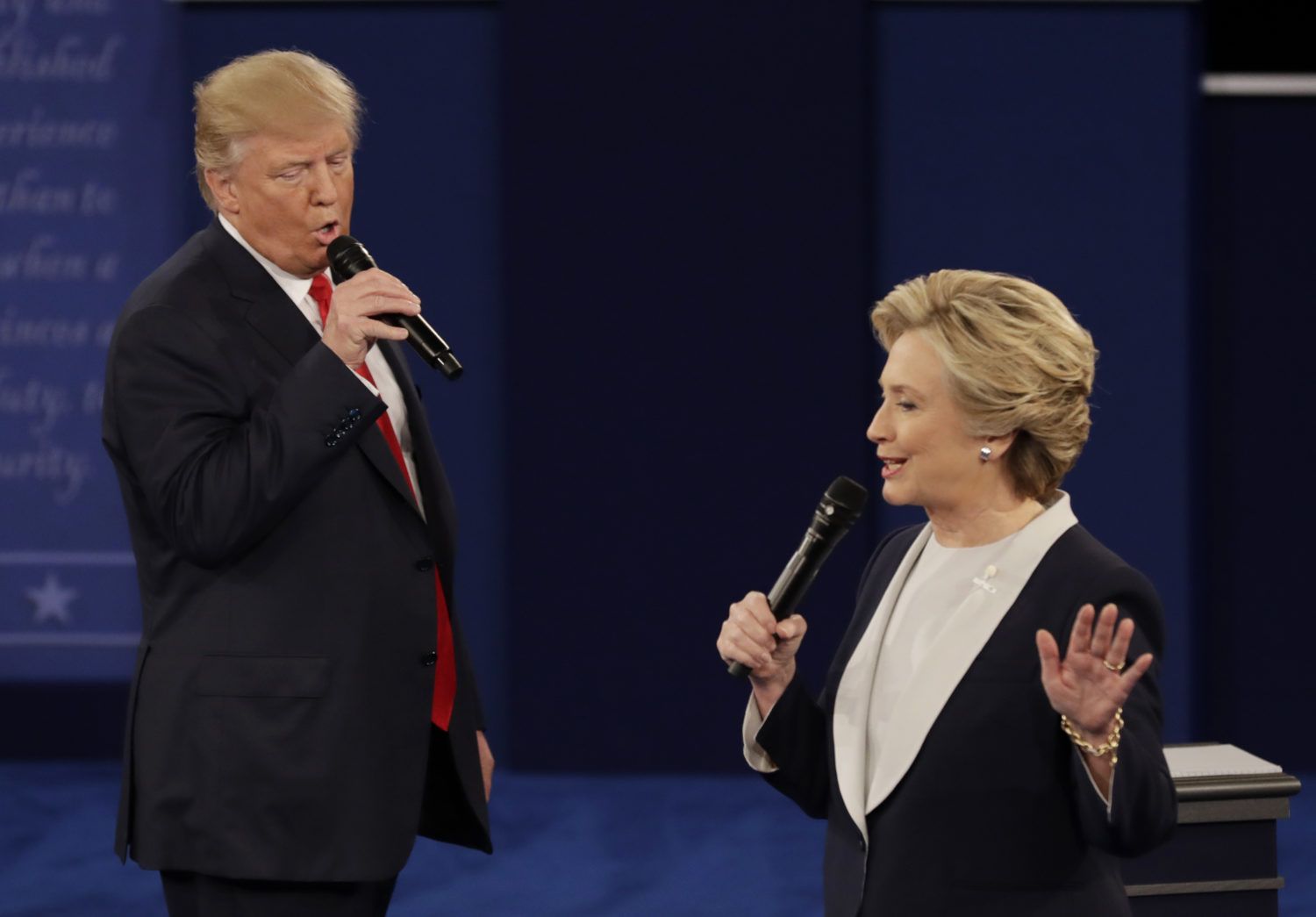Soon after FBI agents raided his Mar-a-Lago estate, former President Donald Trump posted a statement decrying the “weaponization of the justice system.” He called the search “political targeting at the highest level,” and contrasted what was happening to him with what happened to his 2016 Democratic opponent.
“Hillary Clinton was allowed to delete and acid wash 33,000 emails AFTER they were subpoenaed by Congress,” Trump said Aug. 8 on his social media platform, Truth Social. “Absolutely nothing has happened to hold her accountable.”
In the 2016 presidential campaign, chants of “lock her up, lock her up” were regular features at Trump rallies.
While she was never charged, Clinton’s use of a private email account for exchanges with her staff during her time as secretary of state drew an FBI investigation.
Now, according to news accounts, the Justice Department is probing Trump and the classified documents he took with him to Mar-a-Lago after he left office. The Justice Department has not responded to questions about the search, so we don’t know what if anything was removed from the property.
We explore the legal risks Trump faces in a related article. Here, we ask, how do the Clinton and Trump situations compare?
RELATED TRAINING: Apply for our new reporting masterclass with local news expert Kristen Hare by Sept. 6.
Clinton’s emails
Clinton’s email troubles started in 2014, when the House Select Committee on Benghazi asked the State Department for all of her emails. The department didn’t have them all because, instead of only using the State Department email system (with an email address ending in @state.gov), Clinton used a personal email address (@clintonemail.com) housed on private servers located in her Chappaqua, New York, home.
In 2014, Clinton’s lawyers combed through the private server and turned over about 30,000 work-related emails to the State Department and deleted the rest, which Clinton said involved personal matters, such as her daughter’s wedding plans.
Clinton repeatedly said she did not have any classified emails on her server, but the results of an FBI investigation found otherwise.
Of the tens of thousands of emails investigators reviewed, 113 contained classified information, and three of those had classification markers. Former FBI Director James Comey said in 2016 that Clinton should have known that some of the 113 were classified, but others she might have understandably missed. In a sign of the uncertainty around classification, in 2018, a Justice Department report found that the classification markings were not clear.
Ultimately, Clinton paid a political, not a legal, price for her email practices. Republicans wielded the episode against her as proof that she was untrustworthy. Trump said she was “guilty as hell” and often raised the specter of what the roughly 30,000 personal emails she deleted might have contained. House Republican leader Kevin McCarthy said she showed a “fundamental lack of judgment and wanton disregard” for matters of national security.
The FBI issued its findings in July 2016. Broadly, it said classified information had been improperly transmitted, but carelessness, not an intent to skirt the law, was the cause. The issue began to fade, but it resurfaced at the end of October 2016, right before the election. Many believe that in a razor thin election, that timing torpedoed her campaign.
Trump’s documents
The details of the warrant behind the search of Trump’s residence remain unclear. We do know that Trump crossed swords with the National Archives when it was learned that he had taken official records with him when he left the White House. The Presidential Records Act requires that everything go to the archives.
The head of the National Archives, David Ferriero, told the House Oversight and Reform Committee in February that his agency had recovered 15 boxes of presidential records from Mar-a-Lago. Ferriero said they had “identified items marked as classified national security information within the boxes.”
In an echo of Clinton’s email practices, Ferriero also said “some White House staff conducted official business using non-official electronic messaging accounts that were not copied or forwarded into their official electronic messaging accounts, as required by section 2209 of the Presidential Records Act.”
In 2018, about halfway through Trump’s presidency, the National Archives learned that Trump was tearing up documents, another breach of the rules. They contacted the White House counsel’s office, and matters improved.
“White House staff were attempting to tape them back together,” Ferriero told the House committee. “Although White House staff during the Trump administration recovered and taped together some of the torn-up records, a number of other torn-up records that were transferred had not been reconstructed by the White House.”
It is unclear from Ferriero’s letter if documents torn up before the National Archives intervened were retained. Trump said his staff had been cooperating with the National Archives at the time of the raid.
A key difference between the two
Bradley Moss, a Washington-based lawyer who works on national security cases, said the cases of Clinton and Trump are significantly different.
“Trump took properly marked hard copy classified documents from the White House, shipped them to Florida, and stored them in an unsecured location at his residence,” Moss said.
The presence of classified information in Clinton’s emails was less obvious.
“The e-mails were never marked as classified because these were communications from unclassified government accounts,” Moss said.
In three instances, email chains included information with classification markers. It was never clear that Clinton was aware of the presence of that marked information, or if the classification marking was clear.
Marked information is not to be confused with emails containing unmarked information that could be deemed classified. That is a looser definition, and one that can be applied retroactively. Thomas Blanton, director of the National Security Archive at George Washington University, said in one case, an email in one chain forwarded a front-page New York Times story about a drone strike. Under its rules, the CIA called that classified, Blanton said.
When classified information was clearly involved, Blanton said Clinton’s “briefings were on a different system, a classified Blackberry that was managed by State Department IT people.”
Clinton’s emails included moments when staffers wrote that for them to go into more detail, they would need to switch to a secure classified State Department system.
Moss cautioned that while some documents at Mar-a-Lago were clearly marked as classified, many questions remain, such as “where the records were originally located, who boxed them up, when Trump became aware of the existence of the records at Mar-a-Lago, and what, if any, efforts Trump took to rectify the situation once he was informed.”
The answers to those questions, he said, would help determine if anyone could be held criminally liable, and whether Trump himself faces any legal risk.
As for the personal emails that Clinton erased, the FBI said its investigation might have found some of them. Overall, the agency said it was reasonably confident that there was no intentional misconduct.
RELATED: PolitiFact Sheet: Hillary Clinton’s email controversy
RELATED: FBI findings tear holes in Hillary Clinton’s email defense
RELATED: Can Donald Trump run for president if charged and convicted of removing official records?
This article was originally published by PolitiFact, which is part of the Poynter Institute. It is republished here with permission. See the sources for these fact checks here and more of their fact checks here.







